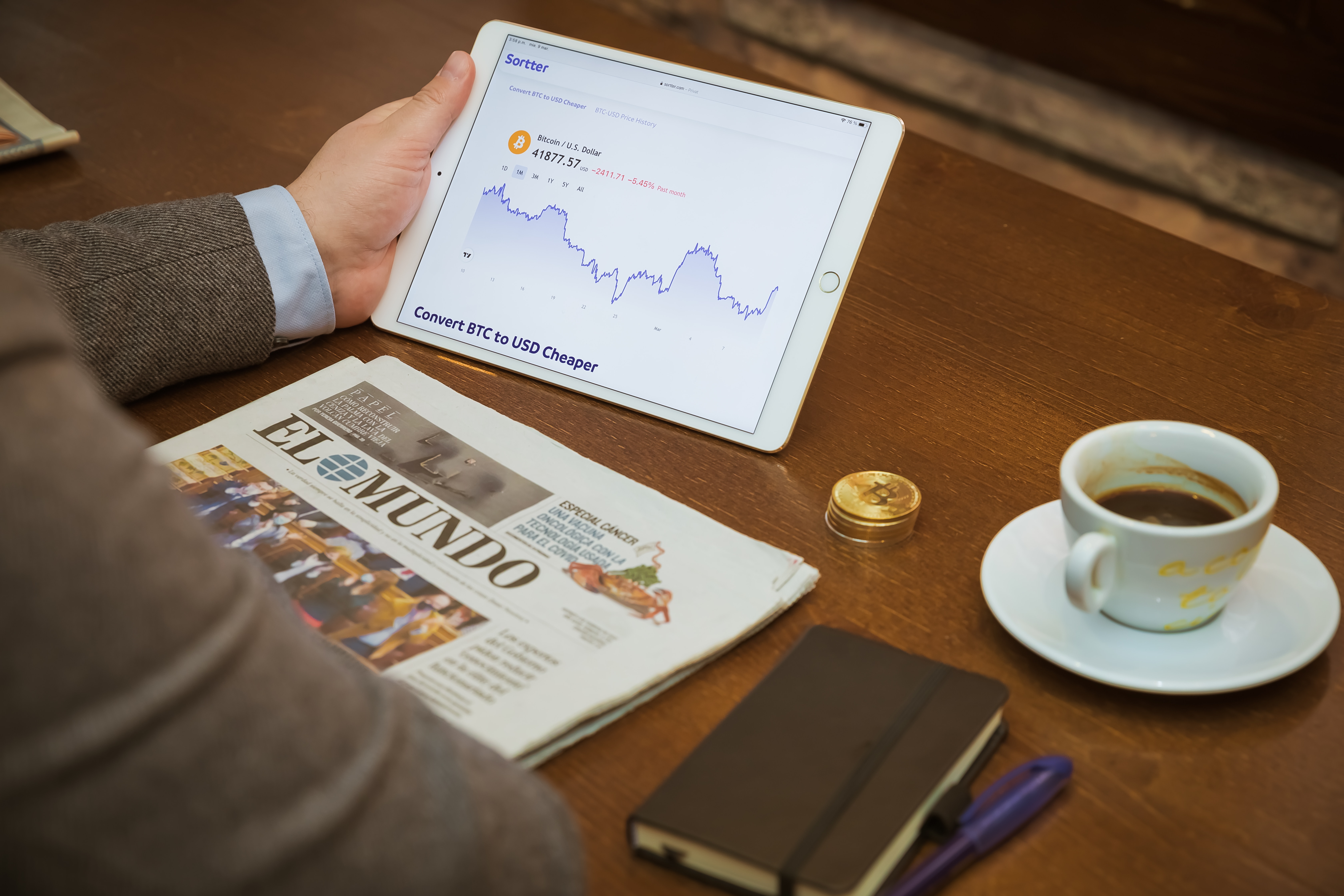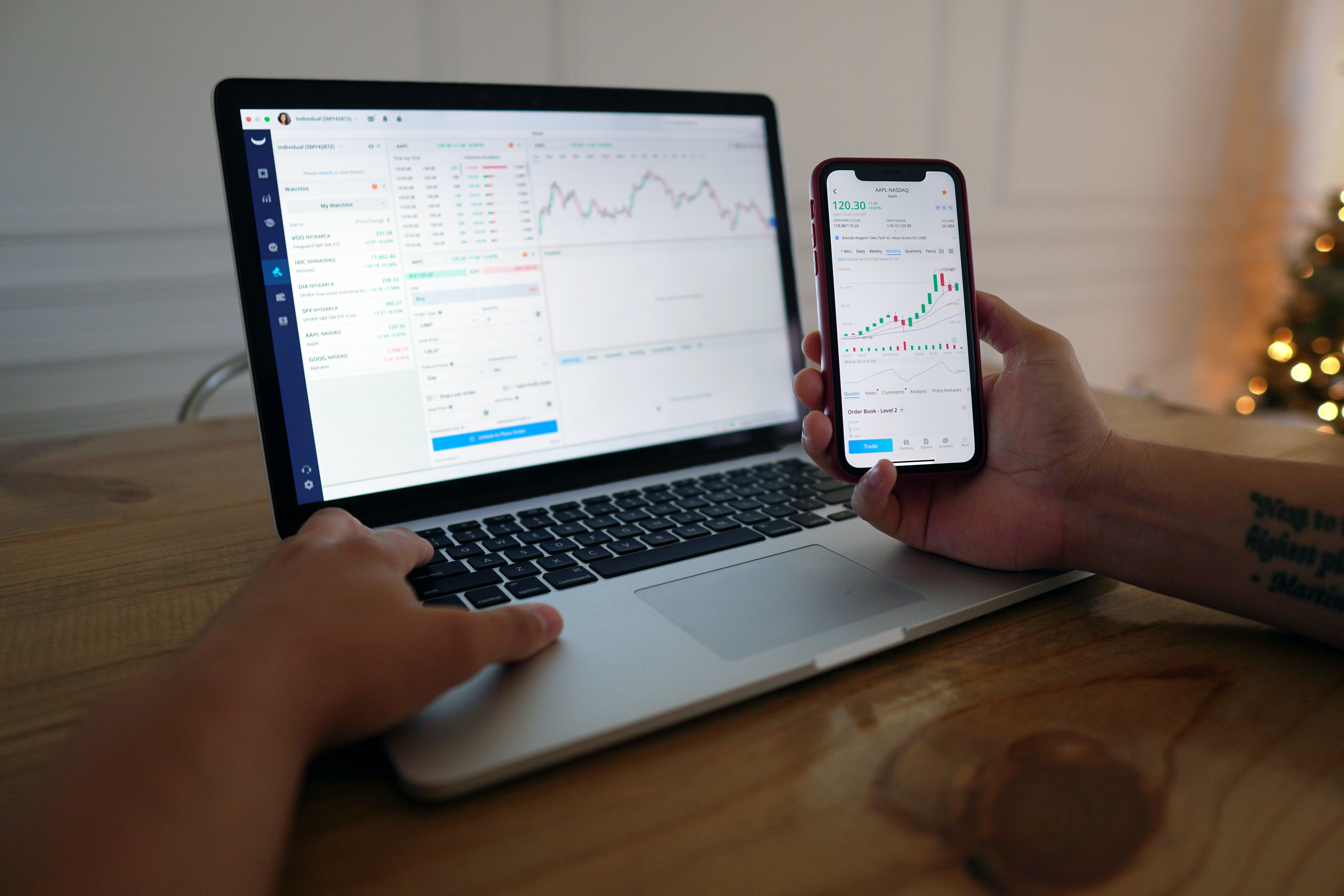What Is Financial Liquidity?

In the financial arena, liquidity is a term you'll bump into quite often. It's essentially an economic measure for businesses, looking at how easily they can turn their assets into ready money without stirring up their market value. When discussing a business's liquidity, we're referring to its knack for taking care of immediate expenses, revealing its resilience in navigating business turbulence. Throughout this article, we will delve deeper into these concepts, highlighting the significance of the current financial liquidity of the company in evaluating a company's robustness and sustainability.
Table of Contents
Financial Liquidity: Definition & Meaning
What are Assets?
What Is Liquidity of Assets?
Types of Liquidity
Factors Influencing Liquidity
Financial Liquidity Measurements
Using And Interpreting Ratios
Why Is Liquidity Important?
Liquidity Analysis In Use
Example of Financial Liquidity
Balance Sheet Example
Benefits of Financial Liquidity
Challenges of Financial Liquidity
Liquidity Risk
Financial Liquidity vs. Solvency
How To Improve Liquidity?
Maintaining Liquidity
In conclusion: Key Takeaways
FAQ
Financial Liquidity: Definition & Meaning
If you’re looking for a financial liquidity definition, it’s a business term that refers to the ease with which a company can swiftly turn its assets or investments into cash when needed. The liquidity of assets can vary significantly. For instance, while your company might have equity in a building, converting this equity into cash to handle an unforeseen expense is not straightforward. In contrast, an inventory that's likely to be sold soon is considered a liquid asset, although it's not as liquid as cash itself, since unforeseen events could interfere with sales.
Understanding the liquidity of your business is crucial, not only for assessing the current financial performance, but also for effective future financial planning. Liquidity planning involves aligning your expected outgoing bills with incoming payments from accounts receivable, with an aim to spot any potential cash shortfalls and create strategies to address them. It also helps to identify periods when you might have extra cash that can be invested in growth opportunities. To carry out this planning, you'll need to calculate certain ratios to gauge your company's future financial health, as we’ll discuss later in this article.
What Are Assets?
Assets are the resources that a business uses to operate and earn revenue. They can vary from tangible things, like machinery used to manufacture a product, to intangible things, such as a patent or financial security. Cash, too, is an asset. On a company's balance sheet, you'll find cash assets and equivalents, like marketable securities, listed alongside inventory and other physical assets.
What Is Liquidity of Assets?
Liquidity of assets means how quickly a company’s assets can be converted into cash. On a balance sheet, assets are listed starting with the most liquid, cash, followed by accounts receivable and inventory, all of which are considered current assets. These assets are expected to be used, collected, or sold within a year, making them pretty liquid. Following current assets on the balance sheet, you'll find non-current assets. These include items like equipment and trademarks, which aren't easily or quickly converted into cash.
Most Liquid Assets
The most liquid current assets in the financial world are the current assets. These are assets that can be swiftly converted into cash, hence providing fast liquidity to a company. Examples of most liquid assets include cash equivalents, accounts receivable, and inventory.
Treasury bills or short-term government bonds are cash equivalents that can quickly be turned into cash. Some funds that can be collected relatively quickly are accounts receivable, which represent money owed to a company by its customers. Inventory, comprising goods available for sale, also contributes to a company's liquidity, though its conversion to cash depends on the company's sales cycle.
Least Liquid Assets
The most minor liquid assets often hold great value, but their peculiarity is that it takes a long time to sell them. This category includes real estate, such as houses and land. Converting these assets into cash is a rather slow process. Less liquid assets can also include high-value items like fine art, collectibles, and jewelry. Even certain business assets, like equipment and inventory, are less liquid. If an asset is unique, high in value, and requires finding a buyer, it tends to be less liquid.
However, it's important to remember that liquidity exists on a scale. Some assets, like bonds or cryptocurrency, are considered liquid, but still take more time to convert into cash than others. They might be less liquid than stocks or cash, but they are definitely more liquid than real estate.
Types of Liquidity
Liquidity comes in two forms: market liquidity and accounting liquidity. The former involves the ease of buying or selling assets, while the latter gauges a firm’s or person's ability to cover short-term debts. Both are key values for financial stability.
Liquidity in the Market
Market liquidity is a type of liquidity denoting how swiftly an asset, like company stocks, can be bought or sold in a market without impacting its price. It's often gauged by the proximity of bid and ask prices. A market with a high trade volume typically has closer bid and ask prices, implying greater liquidity. The closer these prices are, the higher the liquidity is, as buyers don’t need to pay more to purchase the stock, allowing for easy liquidation.
However, liquidity isn't static. It's influenced by various factors such as the trading hours and geographical location of the market. If stocks are traded after hours or if foreign currencies are traded outside their native trading hours, fewer market participants might be present, leading to wider bid-offer spreads, thus reducing liquidity.
Accounting Liquidity
The second major type of liquidity is accounting liquidity, dealing with an individual's or a company's ability to meet ongoing financial obligations. For individuals, this means comparing cash or marketable securities against debts. For companies, the assessment is slightly more complex. It involves comparing current assets, like cash balance and short-term investments, against current liabilities. The higher the ratio of current assets to current liabilities, the better the company's accounting liquidity, indicating a stronger ability to fulfill its debts. It's a critical factor in financial liquidity management.
Factors Influencing Liquidity

A company's liquidity, essentially its ability to fulfill short-term financial commitments, hinges on multiple elements. It starts with the cash reserves and short-term investments that a company holds: the ease with which these assets can be converted into cash influences liquidity directly. Moreover, the extent of the company's current liabilities can adversely impact liquidity, as significant debts can eat into the cash flow.
Effective management of company finances also plays a pivotal role. This includes maintaining equilibrium between assets and liabilities and taking proactive measures, such as optimizing cash flow and keeping a healthy debt-equity ratio to enhance liquidity. Financial ratios like the current ratio (current assets/current liabilities) and quick ratio ((current assets - inventories)/current liabilities) offer important insights into a company's liquidity situation. Higher values of these ratios signal better liquidity.
Lastly, external factors like market circumstances and industry trends can affect liquidity. During times of economic uncertainty, a company might struggle to liquidate assets, which would negatively impact its liquidity.
Financial Liquidity Measurements
A company's financial liquidity, often synonymous with its capacity to cover current or short-term obligations using its current assets, can be measured with certain key ratios. These ratios provide an analytical window into the company's financial health, particularly focusing on how efficiently it can transform assets into cash to meet its liabilities.
Primarily, there are three common ratios to assess a company's liquidity status.
- Сurrent ratio is the proportion of current assets to current liabilities. This ratio provides a snapshot of the company's immediate financial liquidity. A high current ratio often implies a higher degree of liquidity.
- Quick ratio, or the acid-test ratio, is a stringent measure of liquidity that excludes inventories from current assets before comparing it to current liabilities. This is a valuable measure because inventories may not be as easily liquidated as other current assets.
- Cash ratio is a calculation of the sum of cash and short-term investments divided by current liabilities. This ratio provides an understanding of the company's ability to cover its obligations solely with its most liquid current assets: cash and cash equivalents.
Additionally, the excess cash that the company generates over its liabilities, termed cash flow, is another important liquidity indicator. This surplus cash can be employed to expand the business or distributed to shareholders as dividends.
Liquidity Ratios
Liquidity ratios help assess a company's ability to handle short-term financial obligations. They provide a brief picture of the firm's financial strength in the near term. Liquidity ratios are typically categorized into three primary forms: the current ratio, the quick ratio, and the immediate liquidity ratio. These three ratios, each with its own unique insights into the company's financial health, will be analyzed further in the list below.
Immediate liquidity ratio
The immediate liquidity ratio is a critical tool for assessing a company's current financial position. This ratio gauges a firm's ability to meet its most urgent financial obligations by focusing on its most liquid assets. The formula for calculating immediate liquidity is obtained by dividing the sum of cash and short-term investments by current liabilities. It helps pinpoint a company's financial strengths and/or weaknesses, particularly during turbulent market conditions. This is a crucial indicator of financial liquidity, which managers and investors can use to spot any potential liquidity issues early.
Immediate Liquidity Ratio = Cash + Short Term Investments/Current Liabilities
Quick liquidity ratio
The quick liquidity ratio is a key metric for evaluating a company's immediate financial health. It differs from the current ratio by excluding inventory from current assets, as inventory often takes time to convert into cash. The quick liquidity formula is calculated by subtracting inventories from current assets and then dividing the result by current liabilities. This ratio is crucial in financial liquidity management as it provides an idea of the firm's ability to cover its short-term obligations without relying on the sale of inventories.
Quick Liquidity Ratio = Current Assets - Inventory/Current Liabilities
Current liquidity ratio
The value of the current liquidity indicator represents the share of current liabilities that can be covered by the most liquid current assets. It is another measure that represents the financial health of a company. However, maintaining a high level of liquidity doesn't always denote optimum financial management, as excessive liquidity might indicate missed investment opportunities.
Additionally, the ratio of cash and short-term investments to current liabilities, also known as the quick liquidity indicator, provides a more precise measure of a company's immediate financial liquidity. This can guide the improvement of financial liquidity management and ward off the loss of financial liquidity.
Current Liquidity Ratio = Current Assets/Current Liabilities
Cash ratio calculation
The cash ratio, a stringent measure of financial liquidity, gauges a company's capability to fulfill its short-term liabilities using only cash or cash equivalents. It's computed using the formula Cash Ratio = Cash/Current Liabilities. This ratio reflects the portion of current liabilities that can be paid off immediately with cash, without liquidating other current assets. When a company can cover its financial commitments merely through its cash holdings, it signifies an exceptionally robust financial stance. However, it's crucial to strike a balance, as holding excessive cash can also imply missed investment opportunities.
Cash Ratio = Cash/Current Liabilities
Using and Interpreting Ratios
Financial liquidity ratios play a crucial role in determining a company's financial health. They primarily reveal whether a business can cover its short-term debts with its short-term assets. This is typically measured using the current ratio, which divides current assets by current liabilities. If the ratio is greater than one, it indicates that the company is in a healthy liquidity position and has enough resources to cover its imminent financial obligations.
The quick ratio or fast liquidity, on the other hand, implies a more stringent liquidity interpretation. It subtracts inventory from current assets before dividing, yielding a more stringent measure of the liquidity of the company. Traders tend to favor companies with a high quick ratio, as it signifies financial robustness.
However, context is key when interpreting these ratios. While high liquidity might indicate sound financial health, it could also suggest that the company isn't effectively using its resources to grow.
Why Is Liquidity Important?
Financial liquidity, a company's ability to readily access the cash it needs to meet short-term obligations, is of paramount importance in gauging the health of a firm. It's the lifeblood of business operations, enabling swift responses to market fluctuations and facilitating strategic investments. Simply put, the liquidity of the company is what keeps it buoyant in the ever-turbulent seas of commerce.
Understanding financial liquidity isn't solely a numbers game. Yes, there are valuable metrics, including financial liquidity ratios and the financial liquidity formula. However, these numbers should be interpreted in context, not as standalone facts. A robust liquidity interpretation takes into account both current financial liquidity and anticipated future requirements.
Liquidity Analysis In Use

In practice, the analysis of financial liquidity involves evaluating indicators such as the current liquidity ratio, quick liquidity indicator, and cash ratio. These metrics illustrate the company's ability to cover its current liabilities using current assets, the most liquid assets, or solely cash, respectively. Besides these, the company's financial management, level of indebtedness, and cash balance also shape the liquidity situation. Trend analysis of these indicators can signal whether the company's liquidity is improving or declining. Ultimately, understanding these aspects is crucial in maintaining and improving the company's financial liquidity.
Example of Financial Liquidity
Microsoft's fiscal year of 2019 was a financial tour de force. In 2019, Microsoft, the technology giant, experienced a significant increase in its revenue, reaching an impressive $125.8 billion. This was a notable rise from the $110.4 billion they made in 2018. Furthermore, Microsoft's net income also skyrocketed to a massive $39.2 billion, a number that greatly differed from the previous year's figures. It's immediately apparent that Microsoft's financial results in 2019 were far superior to those of 2018.
However, the story becomes more intricate when we delve into the details of Microsoft's financial liquidity. By the end of 2019, Microsoft's coffers held just over $133.8 billion in cash and short-term investments, a slight drop from the $135.6 billion reported in 2018. Moreover, an interesting discrepancy emerged in Microsoft's asset growth. While the company's total assets ballooned by roughly $45 billion, its total current assets saw a minor contraction of around $1.8 billion. This divergence could hint at a strategic realignment in Microsoft's financial management or a shift in market conditions.
Balance Sheet Example
A balance sheet is a kind of fiscal report that offers a glimpse into a business's financial status at a given moment. Let's consider the basic model of Microsoft Balance sheet for 2021, which provides the necessary data to compute liquidity ratios:
| Cash and cash equivalents | $14,224 |
| Accounts receivable, net of allowance for doubtful accounts of $751 and $788 | 38,043 |
| Inventories | 2,636 |
| Total current assets | 184,406 |
| Total liabilities | 191,791 |
| Total stockholders' equity | 141,988 |
Benefits of Financial Liquidity
-
Stability: A high liquidity level represents a stable financial position, enabling a company to handle short-term obligations without financial distress.
- Flexibility: This allows companies to swiftly respond to unforeseen opportunities or challenges by using readily available resources.
- Trustworthiness: This enhances investor, creditor, and stakeholder confidence in the company's ability to meet obligations and achieve goals.
- Avoidance of Debt: Companies with high liquidity can fund their operations and growth organically, reducing the need for external debt and associated interest costs.
Challenges of Financial Liquidity
-
Unutilized Resources: High liquidity may indicate that the company has a large amount of cash and other assets that are not being efficiently used for growth and expansion.
- Lower Returns: Cash and other liquid assets often have lower returns than other investments, potentially leading to missed opportunities for higher profitability.
- Misleading Indicator: A high liquidity ratio might mask long-term financial issues. Liquidity may not reflect the whole financial picture of the company as it focuses on short-term measurements.
- Resource Management: Maintaining a high level of liquidity may require significant management effort, potentially diverting attention from other critical areas of the business.
Liquidity Risk
Liquidity risk emerges when an entity cannot promptly convert its investments into cash to settle its debts. This can happen when an organization's assets are largely in long-term investments, preventing it from making essential purchases or meeting urgent obligations, thereby creating a liquidity risk. For individuals, it can manifest when assets like houses or cars, which aren't easily liquefied, constitute the majority of their holdings, leaving them unable to cover recurring costs like utilities or loan payments. This scenario exemplifies personal liquidity risk, underlining the critical importance of balancing liquid and illiquid assets in maintaining financial stability.
Financial Liquidity vs. Solvency
Liquidity risk arises when a solvent company struggles to fulfill its short-term financial obligations due to low liquidity. This situation can be exemplified by a factory-based business with a sizable inventory and overhead. Although there are numerous sales and incoming orders, the business may face liquidity issues if it lacks readily accessible cash.
For instance, if the profits generated are primarily reinvested in raw materials or property acquisitions, the cash balance may be insufficient to meet current liabilities. Such an entity, despite being solvent, faces liquidity risk due to inadequate management of its most liquid current assets and current liabilities. This highlights the importance of maintaining optimal financial liquidity and effective financial liquidity management to avert potential liquidity crises.
How to Improve Liquidity

Improving or increasing a company's liquidity entails adopting a strategic approach to financial management. One way is by stimulating sales through new marketing initiatives or adopting novel business models like subscriptions or bundling offerings. However, the timely inflow of cash should be monitored to meet bills. Reducing overhead costs like rent, insurance, and legal fees can also free up funds.
An effective invoice collection strategy, offering discounts for prompt payments, or setting weekly cash collection targets can ensure a steady cash flow. Paying off short-term debts faster can improve the financial liquidity of the company, but it's essential not to drain cash reserves entirely. Selling unproductive assets like outdated equipment or unused property can bolster cash reserves.
Refinancing short-term debt to long-term debt can potentially reduce interest rates and provide more flexibility for short-term obligations. Efficient management of accounts payable through negotiated payment terms or taking advantage of discounts for early payments can boost liquidity.
Moreover, keeping a close eye on inventory levels ensures that cash isn't unnecessarily tied up. Reducing operating costs and taking advantage of loan forgiveness schemes, if available, can provide additional liquidity. Lastly, preparing regular cash flow projections can help predict potential liquidity crunches, enabling preemptive action.
Maintaining Liquidity
Understanding and maintaining liquidity is vital to the everyday operations and credibility of a company. Financial liquidity acts as the lifeblood of a business, enabling it to meet immediate obligations and weather unexpected challenges. As an indicator of current financial liquidity, the most liquid current assets are typically examined. These include cash and other assets that can be easily converted to cash without loss in value.
Furthermore, there are numerous factors shaping financial liquidity, ranging from market conditions to internal management practices. Recognizing these can be an essential step toward ensuring a higher degree of liquidity. Indeed, understanding and using indicators of financial liquidity accurately can safeguard a company's financial health, bolster its reputation, and ensure its long-term viability.
In Conclusion: Key Takeaways
It is clear that knowing the answer to questions such as “Financial liquidity: what is it?” and “How does it work?” is pivotal for savvy financial specialists. In modern markets, liquidity should be perceived not just as a comfort blanket, but as a necessary tool for thriving. High liquidity means transactions can occur swiftly, enhancing market stability.
Grasping these nuances empowers market participants to create robust strategies, maintaining the requisite balance between risk and reward. So, whether it's the hustle of Wall Street or navigating a volatile startup investment, understanding financial liquidity is your key to a more stable financial future.
FAQ
How to improve financial liquidity?
Improving financial liquidity involves speeding up customer payments and managing supplier terms. Keeping a cash reserve, efficient inventory control, and investing in liquid assets also helps. Companies should regularly check financial liquidity ratios to track improvements.
How to calculate liquidity?
Liquidity is calculated using ratios. The current ratio divides current assets by liabilities, reflecting short-term debt coverage. The quick ratio excludes inventory from assets for a stricter view. The most conservative cash ratio considers only cash and equivalents against liabilities. These ratios help assess financial health.
What affects liquidity?
There are several factors that affect liquidity. These include the business's operational efficiency, its ability to collect receivables promptly, and how well it manages payables. Market conditions, such as the overall economy and industry trends, can also impact liquidity. Inventory management and financial policies can also play significant roles.
What can liquidity be?
Liquidity can refer to several things in finance, such as how easily an asset can be converted into cash without affecting its market price. For businesses, liquidity is the ability to cover short-term obligations using current assets. It can also refer to the degree to which a market, like stocks or real estate, allows assets to be bought and sold without causing price changes.
How to interpret financial liquidity indicators?
To interpret financial liquidity indicators, remember: a high current ratio suggests good short-term financial health. A quick ratio under 1 may point to liquidity problems, while a high cash ratio shows better coverage for unexpected costs. These ratios collectively indicate liquidity strength.





